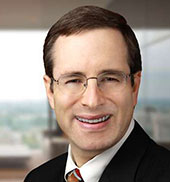As we near tax season, below are some tips for CPAs when planning and preparing tax returns for trusts, along with a link to an upcoming webinar on this very topic.
Remember, trusts with 2016 taxable income over $12,400 pay regular income tax at the top income tax rate. The top federal rates are 20% for long-term capital gain and qualified dividends and 39.6% for other income. Trusts also pay a 3.8% tax on their net investment income.
- Distributions no later than March 6, 2017 can be counted as 2016 distributions. If distributions are authorized and might be a good idea, consider estimating the trust’s taxable income, looking at the beneficiary’s project 2016 tax situation, and determining the extent to which a distribution might save tax.
- By default, most tax return preparation programs trap gains at the trust level. However, capital gains might be able to be carried out to the beneficiaries, even if the trust has not done so in the past.
- Distributions to charity by December 31, 2017, may reduce 2016 taxable income. A trust’s distributions to charity may reduce net investment income subjected to the 3.8% tax, whereas an individual’s contributions do not.
- Check whether the beneficiary’s residence has changed. Changes in a beneficiary’s residence might change the beneficiary’s tax posture or where the trust is a resident.
- The 3.8% tax on net investment income applies to business interests. Trustees can take steps to take to avoid that tax. Note that grantor trusts might become nongrantor trusts, and a history of the trustee’s participation might help the trust avoid the 3.8% tax (if it survives).
- Consider making the trust a partial grantor trust as to a beneficiary. My materials (available to subscribers of my "Gorin’s Business Succession Solutions" newsletter) explain a possible way to begin taxing part of a trust’s income to a beneficiary without making distributions.
- One might be able to make the trust a complete grantor trust as to the beneficiary, if the beneficiary has a lower tax rate than the trust. The trust might place its assets in an S corporation, and the beneficiary makes a QSST election, making the beneficiary taxed on the S corporation’s income whether or not the corporation distributes the income.
- One might be able to tax income to the trust notwithstanding distributions. Again, the trust could place its assets into an S corporation and make an ESBT election. The trust is taxed on the S corporation’s income, even if the trust makes distributions to one or more beneficiaries.
- A trust might be modified to add features to take advantage of some of the strategies described above.
- If a trustee appropriately reports activity to a beneficiary, the beneficiary may be limited in the amount of time to bring an action against the trustee. Unless the trustee does that, the trustee might be liable for decades of activity. Lawyers might consider advising their fiduciary clients to prepare notices. A CPA might suggest that, with consultation from the trustee’s lawyer, the CPA put together notices, which not only is a value added service but also could cut short the time for the beneficiary to complain about the CPA’s work.
For more information, please register for our free one-hour webinar on Tuesday, February 14, 2017, “Fiduciary Income Tax Refresher and Update.”
This article is not intended to provide legal or tax advice. Please consult an appropriate professional to advise you whether these ideas might help your particular situation.
Steve Gorin is a practitioner in the areas of estate planning and the structuring of privately held businesses. CPAs, lawyers, trust officers, family office professionals, and financial advisors are encouraged to sign up for Steve’s popular quarterly newsletter, “Gorin’s Business Succession Solutions.”


